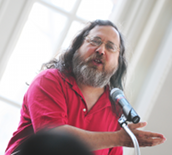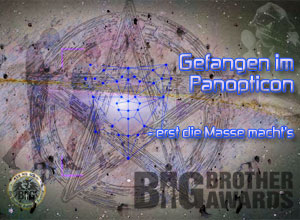

|
search / subscribe / upload / contact |
|
|
||
|
|
||
|
|
||
|
|
||
|
|
||
|
|
||
|
|
||
|
|
||
| RSS-Feed Depeschen | ||

|
||
Date: 2001-02-07
Propa & Ganda: Bin Laden, Krypto & das Netz-.-. --.- -.-. --.- -.-. --.- -.-. --.- -.-. --.- -.-. --.- das Netz und Verschlüsselungsmethoden für ihre finsteren Zwecke nutzen, zusammenge/schrieben hat, zeugt entweder von erheblicher intellektueller Schwäche oder von einer grundsätzlichen Schmierung der nachrichten/dienstlichen Art. Oder von beidem, wie es das pornographische Gedächtnis der conditio humana nachhaltig betont. .-. --.- -.-. --.- -.-. --.- -.-. --.- -.-. --.- -.-. --.- Tue, 06 Feb 2001 17:04:04 +0100 relayed by Maurice Wessling <maurice@bof.nl> -.-. --.- -.-. --.- -.-. --.- -.-. --.- -.-. --.- -.-. --.- Terror groups hide behind Web encryption By Jack Kelley, Usa Taoday WASHINGTON Hidden in the X-rated pictures on several pornographic Web sites and the posted comments on sports chat rooms may lie the encrypted blueprints of the next terrorist attack against the United States or its allies. It sounds farfetched, but U.S. officials and experts say it's the latest method of communication being used by Osama bin Laden and his associates to outfox law enforcement. Bin Laden, indicted in the bombing in 1998 of two U.S. embassies in East Africa, and others are hiding maps and photographs of terrorist targets and posting instructions for terrorist activities on sports chat rooms, pornographic bulletin boards and other Web sites, U.S. and foreign officials say. "Uncrackable encryption is allowing terrorists Hamas, Hezbollah, al-Qaida and others to communicate about their criminal intentions without fear of outside intrusion," FBI Director Louis Freeh said last March during closed-door testimony on terrorism before a Senate panel. "They're thwarting the efforts of law enforcement to detect, prevent and investigate illegal activities." A terrorist's tool Once the exclusive domain of the National Security Agency, the super-secret U.S. agency responsible for developing and cracking electronic codes, encryption has become the everyday tool of Muslim extremists in Afghanistan, Albania, Britain, Kashmir, Kosovo, the Philippines, Syria, the USA, the West Bank and Gaza and Yemen, U.S. officials say. It's become so fundamental to the operations of these groups that bin Laden and other Muslim extremists are teaching it at their camps in Afghanistan and Sudan, they add. "There is a tendency out there to envision a stereotypical Muslim fighter standing with an AK-47 in barren Afghanistan," says Ben Venzke, director of special intelligence projects for iDEFENSE, a cyberintelligence and risk management company based in Fairfax, Va. "But Hamas, Hezbollah and bin Laden's groups have very sophisticated, well-educated people. Their technical equipment is good, and they have the bright, young minds to operate them," he said. U.S. officials say bin Laden's organization, al-Qaida, uses money from Muslim sympathizers to purchase computers from stores or by mail. Bin Laden's followers download easy- to-use encryption programs from the Web, officials say, and have used the programs to help plan or carry out three of their most recent plots: Wadih El Hage, one of the suspects in the 1998 bombing of two U.S. embassies in East Africa, sent encrypted e-mails under various names, including "Norman" and "Abdus Sabbur," to "associates in al Qaida," according to the Oct. 25, 1998, U.S. indictment against him. Hage went on trial Monday in federal court in New York. Khalil Deek, an alleged terrorist arrested in Pakistan in 1999, used encrypted computer files to plot bombings in Jordan at the turn of the millennium, U.S. officials say. Authorities found Deek's computer at his Peshawar, Pakistan, home and flew it to the National Security Agency in Fort Meade, Md. Mathematicians, using supercomputers, decoded the files, enabling the FBI to foil the plot. Ramzi Yousef, the convicted mastermind of the World Trade Center bombing in 1993, used encrypted files to hide details of a plot to destroy 11 U.S. airliners. Philippines officials found the computer in Yousef's Manila ap artment in 1995. U.S. officials broke the encryption and foiled the plot. Two of the files, FBI officials say, took more than a year to decrypt. "All the Islamists and terrorist groups are now using the Internet to spread their messages," says Reuven Paz, academic director of the Institute for Counter-Terrorism, an independent Israeli think tank. Messages in dots U.S. officials and militant Muslim groups say terrorists began using encryption which scrambles data and then hides the data in existing images about five years ago. But the groups recently increased its use after U.S. law enforcement authorities revealed they were tapping bin Laden's satellite telephone calls from his base in Afghanistan and tracking his activities. "It's brilliant," says Ahmed Jabril, spokesman for the militant group Hezbollah in London. "Now it's possible to send a verse from the Koran, an appeal for charity and even a call for jihad and know it will not be seen by anyone hostile to our faith, like the Americans." Extremist groups are not only using encryption to disguise their e-mails but their voices, too, Attorney General Janet Reno told a presidential panel on terrorism last year, headed by former CIA director John Deutsch. Enc ryption programs also can scramble telephone conversations when the phones are plugged into a computer. "In the future, we may tap a conversation in which the terrorist discusses the location of a bomb soon to go off, but we will be unable to prevent the terrorist act when we cannot understand the conversation," Reno said. Here's how it works: Each image, whether a picture or a map, is created by a series of dots. Inside the dots are a string of letters and numbers that computers read to create the image. A coded message or another image can be hidden in those letters and numbers. They're hidden using free encryption Internet programs set up by privacy advocacy groups. The programs scramble the messages or pictures into existing images. The images can only be unlocked using a "private key," or code, selected by the recipient, experts add. Otherwise, they're impossible to see or read. "You very well could have a photograph and image with the time and information of an attack sitting on your computer, and you would never know it," Venzke says. "It will look no different than a photograph exchanged between two friends or family members." U.S. officials concede it's difficult to intercept, let alone find, encrypted messages and images on the Internet's estimated 28 billion images and 2 billion Web sites. ... It's no wonder the FBI wants all encryption programs to file what amounts to a "master key" with a federal authority that would allow them, with a judge's permission, to decrypt a code in a case of national security. But civil liberties groups, which offer encryption programs on the Web to further privacy, have vowed to fight it. Officials say the Internet has become the modern version of the "dead drop," a slang term describing the location where Cold War-era spies left maps, pictures and other information. ... "Who ever thought that sending encrypted streams of data across the Internet could produce a map on the other end saying 'this is where your target is' or 'here's how to kill them'?" says Paul Beaver, spokesman for Jane's Defense Weekly in London, which reports on defense and cyberterrorism issues. "And who ever thought it could be done with near perfect security? The Internet has proven to be a boon for terrorists." Mehr davon http://www.usatoday.com/life/cyber/tech/2001-02-05-binladen.htm -.-. --.- -.-. --.- -.-. --.- -.-. --.- -.-. --.- - -.-. --.- -.-. --.- -.-. --.- -.-. --.- -.-. --.- -.-. --.- edited by published on: 2001-02-07 comments to office@quintessenz.at subscribe Newsletter - -.-. --.- -.-. --.- -.-. --.- -.-. --.- -.-. --.- -.-. --.- |
|
|
|
| CURRENTLY RUNNING | |
q/Talk 1.Juli: The Danger of Software Users Don't Control

|
|
| !WATCH OUT! | |
bits4free 14.Juli 2011: OpenStreetMap Erfinder Steve Coast live in Wien

|
|

